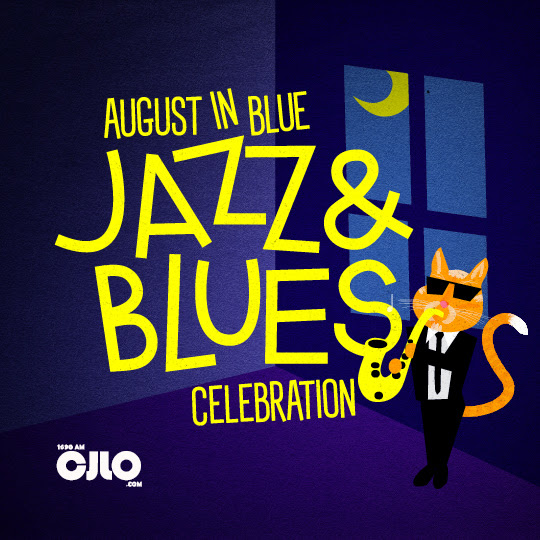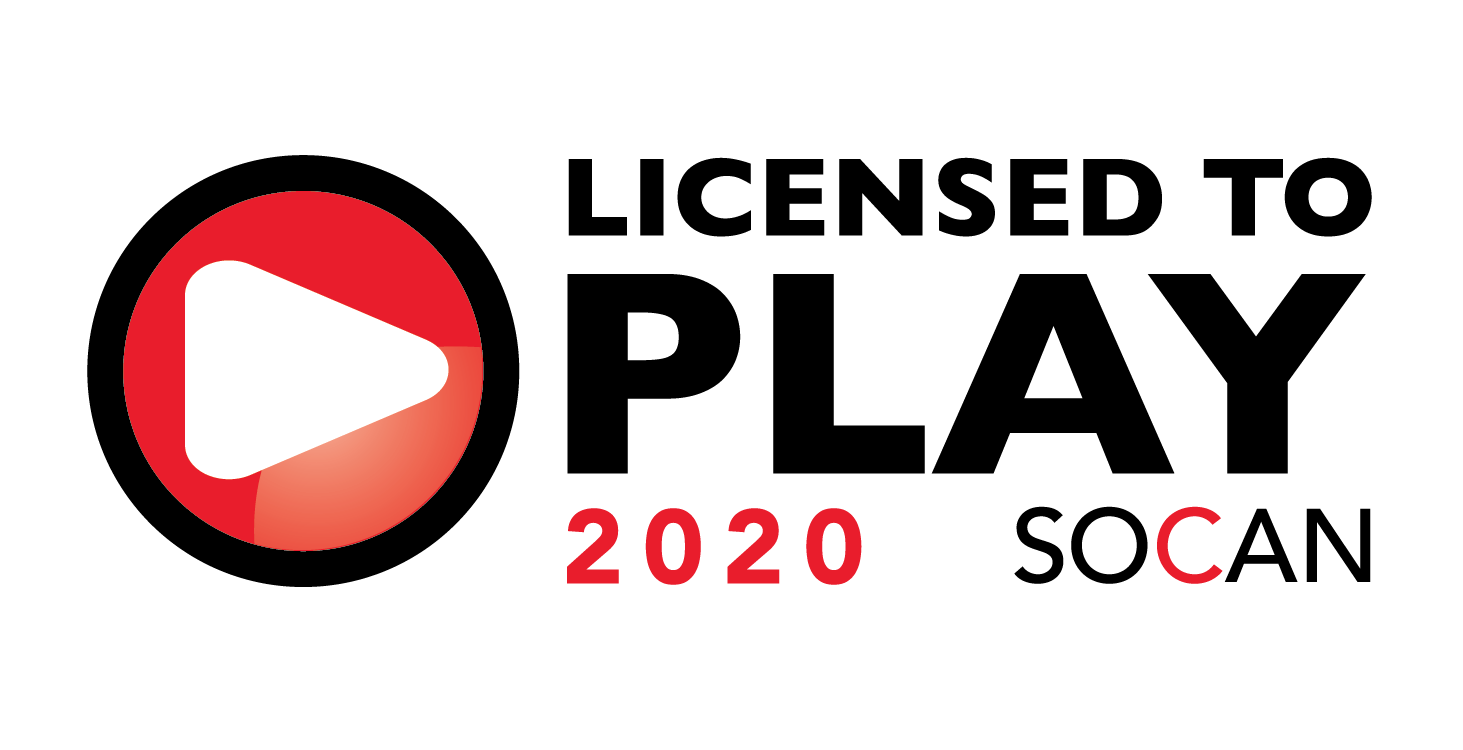August in Blue: Interview with Hip-Hop Music Director Megan Dams

This week CJLO is celebrating the last genre week of the year, August in Blue, dedicated to appreciating the longstanding stake the blues has in society and the arts.
It’s crucial to acknowledge that the blues genre is an Afro-American contribution that came into fruition after the Civil War in the 19th century, evolving from the oral work songs of Black folks during the slave trade. The blues were birthed in the Deep South region of the U.S. along the Mississippi Delta (which harboured a whole sub-genre of blues, referred to as "Delta Blues"; think Robert Johnson and Howlin' Wolf). This history plays an integral role for the melancholy behind the blues, for lyrics that share the singer’s lovelorn or morose feelings rather than a story, and for sultry chord progressions with a glass slide that weep along guitar strings that contunually console, inspire and move many.
The influence of the blues persists in the music of rap and hip-hop respectively, with similarities being how the media first discriminated both genres, as “devil’s music” that corrupts society until music labels found white musicians to repackage Black blues musician’s songs to be more consumable to a white audience (re: the rise of Elvis’s career and the decline of Big Mama Thorton’s as one instance); and how both the blues and hip-hop were birthed from working class communities. Although blues lyrics don’t overtly speak out against racism and social injustice as hip-hop does, the genre still constitutes as music of resistance through the act of a Black blues singer expressing their feelings through music and lyrics, considering how the genre is connected to a time when the majority of society sought to silence Black folks. The blues remains an integral part of history, music and society. It would be hard to envision rock and roll, funk, metal, and country (to list a few), if it weren’t for the genre.
To honour the blues this week at CJLO in spirit of August in Blue, I spoke with our hip-hop music director, Megan Dams, to reflect more on the influence blues music has, on a genre that is the closest kin to blues we have today: hip-hop.
1. Hey Megan! To begin this interview, could you tell the folks reading this what it is you do here at CJLO?
Hey Kaitlyn, sure! I'm the Hip-Hop Music Director here at CJLO (although more like hip-hop/r&b/soul/funk etc...) and I have my own show called Purple Hour where I spin the best of these genres every other Friday at 9AM. Overall, I'm really passionate about diversifying our programming here at CJLO, and giving a platform to artists in these genres in the city.
2. What draws you personally to hip-hop?
From a sonic/production perspective, it is absolutely the most unique, innovative, and expansive genre. What can go into crafting a hip-hop beat is insane. Because you don't typically have a singer to give the song its melodic identity and groove, that all has to come from the beat. Whether it's samples, super obscure instruments, or random, bizarre noises, anything can fly in a hip-hop song if it's put together the right way. Lyrically, and more thematically, I also like how over-the-top and explicit it can be. Just as there's no limit to what can make a hip-hop beat, there's no limit to what you can say and be. Of course, that's where the genre can get into trouble, but it's also where its beauty and power comes from.
3. What started your deep appreciation for hip-hop (sub-genres included) music? Was there one album in particular that’s most memorable, or a moment?
It's funny you ask! When I was in high school, I was in class with a good friend of mine when he pulled out his laptop and started streaming the Yeezy Season 3 fashion show, where Kanye West debuted The Life of Pablo before the album actually came out. I was blown away—I didn't know hip-hop could sound like that. Coupled with the way the fashion show was shot and everything, I think it just sparked something in me. Aside from that moment though, I grew up just outside of Toronto while Drake and The Weeknd were becoming huge. Whether I liked it or not, my upbringing was punctuated by their work. So really, hip-hop and R&B were just part of my milieu.
4. I know you just recently were a part of a panel discussing the difference between Montreal’s hip-hop scene compared to that of Toronto’s. Could you discuss the main distinctions or speak?
There's a lot. First, a lot more hip-hop and R&B come out of Toronto than Montreal. Montreal also, of course, has both English and French hip-hop scenes that tend to stay quite separate from each other, and it's also a much younger scene without an established 'sound'. I never know what a hip-hop track from Montreal is going to sound like, which I think is kind of cool. It could be pop, rock, electronic, or folk influenced, and a lot of the time is also influenced by other French-speaking parts of the world like Haiti, France, or parts of Africa. Toronto, on the other hand, because artists from the city have paved the way and become internationally extremely successful, has a distinct 'sound'. Moody and melodic, with a huge emphasis on creating an atmosphere with the production—I can hear when a song's from Toronto. That's just scratching the surface, but those are the major differences I see (or hear, rather)!
5. I read your essay on Ariana Grande’s appropriation on hip hop and Black culture with “Thank U, Next” where you argue how her whiteness and overall image lets her get away with appropriating hip-hop through all of the song’s/album's elements, and it was a really illuminating read. How do you think white consumers should go about listening to culturally appropriated music, considering its a common occurrence among mainstream pop artists?
Oh wow! Thanks for giving it a read and I'm glad you found it illuminating. I'm definitely not the one to be able to say exactly how white consumers should go about listening to culturally appropriated music, but if you're looking for my input, I'd say just make sure you know where influences are coming from. Don't let them be invisibilized. Familiarize yourself with hip-hop, R&B, and soul from a bunch of different eras. That way, you'll be able to recognize these influences the next time you hear any Top 40 "pop" song out today. There's only so much you can do, though, this is obviously just one manifestation of a much larger issue. Any effort that goes towards helping, recognizing, and liberating the Black community is a step in the right direction.
6. Aside from listening to hip-hop music, are there any other ways you consume hip-hop or think people can otherwise partake in the ethos of the genre outside of music?
At the end of the day, I think the spirit of hip-hop is about not taking shit from anyone, being creative as hell with what you've got, and living and breathing your art. If you're embodying these qualities in your life, you're certainly embodying the ethos of hip-hop too.
7. From your experience of being an avid listener of hip-hop and R&B music, are there any links between those genres and the blues that stick out to you?
I mean, I definitely see contemporary R&B as having stemmed from the blues. I think what’s transformed it so much sonically, though, has been advancements in technology, particularly in terms of how music is recorded. When I think of blues music, I think of, well, real instruments—the saxophone, piano, guitars—but nowadays, producers have access to endless virtual instruments and ways to manipulate how they sound, as well as layering and vocal processing. Overall, I see R&B as a much more highly technically-produced offspring of the blues with lyrics and themes that reflect a much more contemporary society and culture. However, the core of the blues: raw emotiveness, smooth texture, and an overarching melancholy, pensive, blue feel—has carried on to influence all genres of music today, with only one example being R&B.
Tune into Purple Hour every other Friday at 9am with host Megan Dams for your morning dose of curated hip-hop, both local and worldwide!




